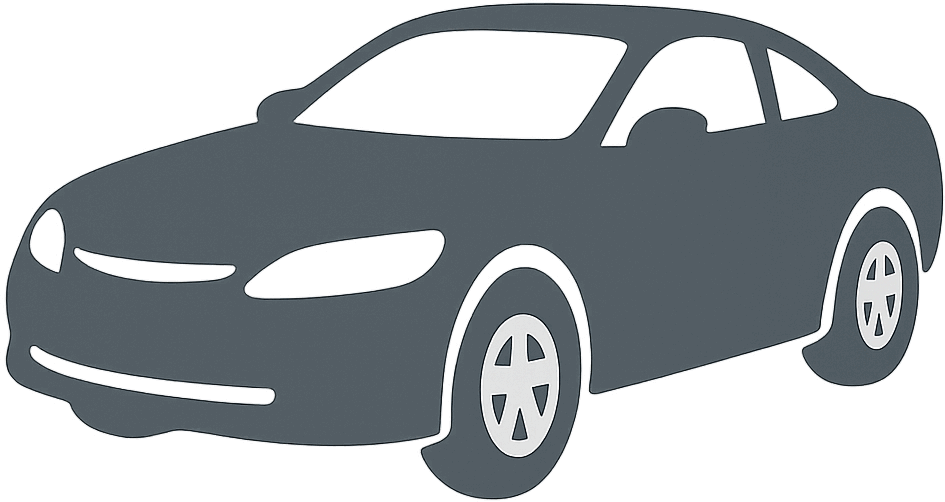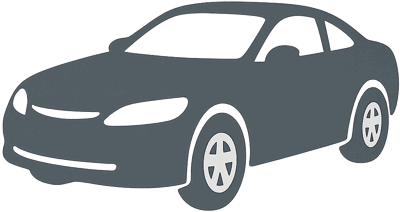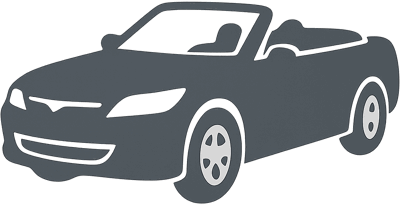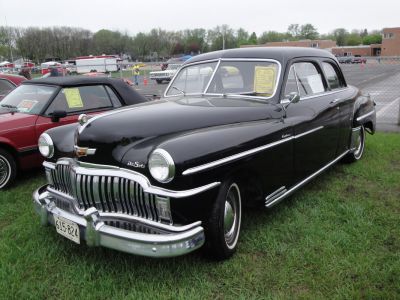 1949 DeSoto Deluxe Club Coupe (Second Series) Dimensions, Size & Specs
1949 DeSoto Deluxe Club Coupe (Second Series) Dimensions, Size & Specs
Measurements of the 1949 DeSoto Deluxe Club Coupe, engineered for optimal performance and comfort
| Dimensions | |
|---|---|
| Length: | 5253 mm206.8 in17.2 ft |
| Width: | 1862 mm73.3 in6.1 ft |
| Height: | 1687 mm66.4 in5.5 ft |
The 1949-1950 DeSoto Deluxe Club Coupe (Second Series) represents a classic American coupe with distinctive styling and substantial dimensions typical of post-war automobiles. Measuring 5253 mm (206.9 inches) in length, the vehicle offers a spacious stance that contributes to its commanding road presence and comfort inside the cabin. The width of the DeSoto Deluxe Club Coupe stands at 1862 mm (73.3 inches), providing a stable and roomy interior environment suitable for a coupe of its era. Its height is 1687 mm (66.4 inches), which aligns with the design trends of the late 1940s, offering a balanced profile that blends elegance with functionality. Produced between 1949 and 1950, this generation of the DeSoto Deluxe combines classic curves and sturdy build quality, ensuring it remains a cherished model among vintage car enthusiasts. The coupe configuration emphasizes a two-door layout that delivers both style and practicality, making it a noteworthy option in the historical lineup of DeSoto vehicles. Overall, the DeSoto Deluxe Club Coupe from this period is an excellent representation of mid-20th century automotive size and design, appealing to collectors and those interested in classic car dimensions and comparisons.
Discover the standout features that make the 1949 DeSoto Deluxe Club Coupe a leader in its class
Have a question? Please check our knowledgebase first.
The 1949-1950 DeSoto Deluxe Club Coupe (Second Series) has a length of 5253 mm (206.8 inches), a width of 1862 mm (73.3 inches), and a height of 1687 mm (66.4 inches). These dimensions make it a fairly large coupe for its time, offering a spacious interior and a commanding road presence characteristic of late 1940s American cars. Its substantial width contributes to wider seating and improved stability, while the length gives ample legroom. The height is typical for coupes of the period, balancing headroom and aerodynamic styling.
Compared to the predecessor DeSoto Deluxe models from the mid-1940s, the 1949-1950 Deluxe Club Coupe features a more modernized body style and a slightly larger overall footprint. While exact figures vary by specific past model, the post-war design introduced a longer wheelbase and wider body, offering improved interior space and road comfort. The second series emphasized sleek styling and increased dimensions, giving the car a more substantial presence on the road. This generation improved not only in exterior size but also in interior comfort and passenger space, reflecting automotive trends toward larger, more luxurious vehicles after World War II.
Standard residential garages typically measure around 2.4 to 3 meters (8 to 10 feet) wide and approximately 5.5 to 6 meters (18 to 20 feet) deep. The DeSoto Deluxe Club Coupe, measuring 5253 mm (5.25 meters or 16.9 feet) in length and 1862 mm (1.86 meters or 6.1 feet) in width, fits comfortably inside a standard garage in terms of length and width. However, maneuvering space can be tight given the car's width. Additionally, the coupe’s height of 1687 mm (1.69 meters or 5.54 feet) poses no problem for standard garage door heights, which are generally around 2.1 to 2.4 meters (7 to 8 feet). Overall, it fits, but careful parking is needed due to its sizable width.
The DeSoto Deluxe Club Coupe has a width of 1862 mm (73.3 inches), making it wider than many modern compact cars. This wider stance contributes to greater interior shoulder room and a stable, planted feel on the road. However, the wider body can pose challenges in narrow parking spaces and tight city streets, especially considering the larger turning radius common in vehicles of that era. Drivers should be mindful when maneuvering in urban settings or parking garages with tight bays. Still, its width was typical for American coupes of the late 1940s, balancing comfort and road presence.
The DeSoto Deluxe Club Coupe stands at 1687 mm (66.4 inches) tall. This height offers ample headroom for most occupants, especially considering coupe designs often sacrifice some rear headroom due to sloping rooflines. The 1949 design maintained a relatively upright roof to maximize passenger comfort. The height also contributes to a spacious feel inside the cabin and ease of entry and exit. Overall, the coupe's height balances aesthetic styling with interior accommodation, fitting well within the dimensions typical of late-1940s American coupes.
While exact curb weight figures for the 1949-1950 DeSoto Deluxe Club Coupe (Second Series) vary in historical records, typical weights for similar full-sized coupes from DeSoto in this period range between 1700 to 1900 kg (roughly 3750 to 4200 lbs). This substantial weight, combined with the size of the vehicle and its drivetrain, affects acceleration, fuel economy, and overall driving dynamics. The relatively heavy mass contributes to a smooth, stable ride on highways but can limit nimbleness in city driving. The weight was consistent with post-war full-size American cars emphasizing comfort, durability, and road presence over sportiness or efficiency.
The 1949-1950 DeSoto Deluxe Club Coupe is comparable in size to other American full-size coupes from the late 1940s, such as the Chrysler Windsor, Plymouth Special Deluxe Coupe, and Ford Super Deluxe Coupe. At 5253 mm (206.8 inches) in length and 1862 mm (73.3 inches) in width, it is on the larger side, emphasizing luxury and spaciousness. Competitors often had similar or slightly smaller dimensions, but DeSoto’s styling and engineering strived to offer a balance of comfort, style, and road presence typical of upscale American automobiles in that era.
Thanks to its generous exterior dimensions—5253 mm (206.8 inches) in length and 1862 mm (73.3 inches) in width—the 1949-1950 DeSoto Deluxe Club Coupe offers spacious interiors with comfortable front and rear seating for a coupe. The wide body allows for ample shoulder room, while the nearly 5.25-meter length translates to good legroom for both front and back passengers. While coupes typically have limited rear headroom compared to sedans, the DeSoto's nearly 1.69-meter height helps maintain a roomy cabin feel. This results in a comfortable ride, suitable for long drives and cruising with friends or family.
The 1949-1950 DeSoto Deluxe Club Coupe (Second Series) reflected post-war American automotive design trends with sleek, streamlined lines, pronounced fenders, and a more modern grille compared to its predecessors. It featured a robust V8 engine typical of DeSoto's emphasis on performance and smooth driving experience. Inside, the coupe boasted upgraded upholstery and stylish dashboard elements that combined comfort and functionality. Engineering-wise, the car retained a solid frame and suspension designed for comfortable cruising, while its size and weight contributed to a solid, stable ride typical of late 1940s luxury coupes.
While the 1949-1950 DeSoto Deluxe Club Coupe offers classic styling and ample interior space, its practicality for daily modern use is limited by certain factors. The car's large size (over 5.25 meters long and nearly 1.9 meters wide) can make parking and maneuvering in modern congested urban environments challenging. Additionally, its older technology means it lacks modern safety, emissions, and fuel efficiency features. However, it remains a sought-after classic for enthusiasts who appreciate its vintage charm. For light daily use or weekend driving, it performs well, but for modern daily commuting, more contemporary vehicles are generally preferable.
Discover similar sized cars.

| Production: | 1950 |
|---|---|
| Model Year: | 1950 |
| Length: | 5253 mm206.8 in |
| Width: | 1862 mm73.3 in |
| Height: | 1687 mm66.4 in |

| Production: | 1949-1950 |
|---|---|
| Model Year: | 1949 |
| Length: | 5253 mm206.8 in |
| Width: | 1862 mm73.3 in |
| Height: | 1687 mm66.4 in |

| Production: | 1949-1950 |
|---|---|
| Model Year: | 1949 |
| Length: | 5253 mm206.8 in |
| Width: | 1862 mm73.3 in |
| Height: | 1687 mm66.4 in |
